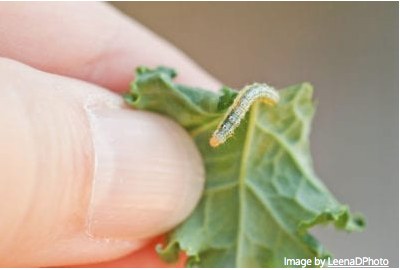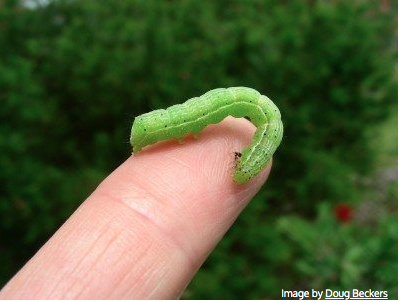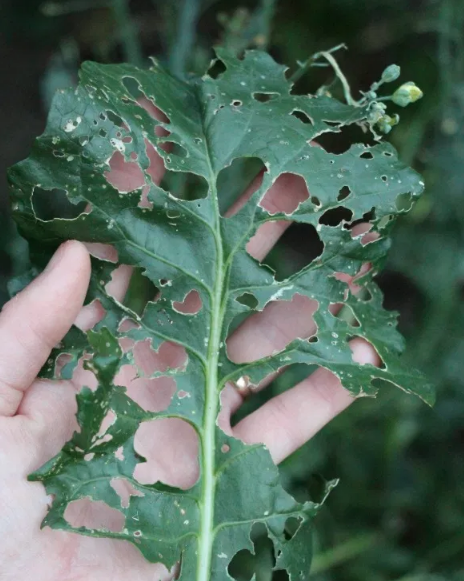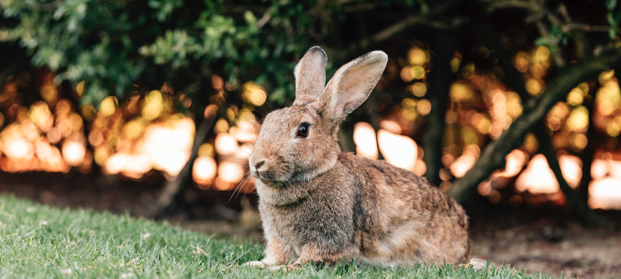Keeping The Pests Away In The Cool Season
Jan 06, 2023In the cool season garden, the pests that will be most likely to drive you crazy are worms, slugs, critters that visit for a midnight snack, and the weather. Today, I am going to show you how to get a plan to deal with them all. This is a season of low pest pressure, but we can't let our guard down. Cool season pests can do serious damage!!
The first step to getting a pest plan is to raise your tolerance to insect and disease damage. There is no need to panic if there are a few spots or a few holes in a few leaves of your plants. Insect and disease problems often come and go without causing a substantial amount of damage. In a vegetable garden on Pinterest, there won't be any munched leaves on the cabbage and cauliflower, but that just isn't reality. Chances are, you will have holes in your leaves. And that is not a huge cause of concern.
Left unchecked, however, and insects and disease can quickly reduce or even wipe out crops we have worked hard to grow. So regular monitoring and early intervention are the key. Many of the techniques we gardeners use to reduce pest problems are proactive. Make it a point to inspect your garden every day, at least in the mornings, preferably morning and evening, to know what is going on.
One of the best defenses against pest problems is to keep your plants in tip top condition through good culture. A healthy, vigorous plant is usually more resistant to disease and withstands insect attack better. Good culture includes proper spacing when planting, and planting the right plant in the right location where it receives the proper soil, drainage, water, light and nutrients.
LSU Ag Center
Starting off right is the best way to help your garden through the season. We focus so much on spacing and soil building and sunlight, and this is why! Now, it isn't a guarantee because we are dealing with nature of course, but this is a great first step. Now let's talk about specific pests and how to deal with them.
Worms in the Garden...And Not The Good Kind
In the warm season, army worms and horn worms wreak havoc on our summer veggies. In the cool season we will deal with cabbage worms. They act the same way as an army worm. The come meaning business and are very hungry. These worms make the leaves of your plants look so raggedy and drive gardeners crazy.


These are the two most common cabbage worms we will see this season, and believe it or not, the easiest way to get rid of them is to just pick them off. Generally, you can get rid of them before they do too much damage if you are inspecting at least once a day. Some signs to look for are always black or green residue on the leaves. When you see that you know that a worm is close by. You will also sometimes see their web. The leaf will be rolled over with webbing inside of it. If you see this, pry open the leaf and you will most likely find a worm inside.
There are a couple ways to get rid of them. Picking them off is gross, but it is very efficient. You can also hose them off of your plants. Chickens love to eat them, so if you pick them off, pass them along to the chickens for a little treat!
PREVENTION
Companion planting is the key to prevention for fall worm invasions. Planting marigolds and nasturtiums really help out in the pest control department. The worms LOVE these plants , so they will wreak havoc on nasturtiums, particularly, but will leave your brassicas alone. AND, the spiders feast on the larvae (worms) that are all over the nasturtium, keeping them from coming back next year! Companion planting is key!
You can also use Dipel Dust to kill any infestation of caterpillar that you can't seem to get rid of. Remember, in order for this to work, the worms must ingest the dust. This is only a good remedy for worms you are seeing. It is a game changer in the garden.
If you aren't seeing worms, but you are seeing munching, you may have another pest problem.
Slugs and Snails In The Garden....Harmless? No Way!
Slugs are one of the most common garden pests during the cool season, and facing a slug infestation is serious business, filled with slime trails, damaged leaves, and missing seedlings. The truth is that organic slug control is both manageable and affordable, when you’re armed with the right tools. Here is how to deal with these garden gobblers.
Now that the weather is cooling off, the slugs will begin coming out for a midnight snack more often. Garden slug control can be difficult because many times the problem is misdiagnosed and the damage is blamed on another garden pest. Since slugs feed primarily at night, gardeners tend to notice the damaged plants, but they can’t find the culprit when they search the garden during the day. So, the cause of the damage becomes a mystery and the gardener might choose to spray the plant with a general insecticide in an attempt to kill the bug, which is useless, of course, against a slug.
So what do you do?? You have to get smarter than them. If you have had damaged leaves on your plants, but aren't seeing any worms, you may have slugs coming to visit. If you are gardening in raised beds, the chances of slugs finding your plants are less, but if you have been spraying your lawn for cabbage moths in the last few weeks and now you have vegetable damage, you may have inadvertently driven the slugs to your garden. Here are some signs:
• If you come out to the garden in the morning and nothing remains of your seedlings but leaf mid-ribs and stumps, slugs are a likely culprit.
• Perfect, round holes in tomatoes, strawberries, and other soft fruits can also indicate the slugs are coming by.
• Ragged holes in leaf edges and centers is another sign of slugs.
• Slime trails on plants, walls, rocks, or mulch are another tell-tale sign of slug troubles.

PREVENTION
Seeing any of these SIGNS?? Let's talk about how to test the waters to see if you may have a slug problem. It is easier than you think. Next time you snack on a citrus fruit like a satsuma, peel the rind carefully so you can keep one bowl-shaped half in tact. Poke a hole that’s large enough for a slug to fit through, and then sit the fruit upside down like a dome in a shallow pan of soapy water in your garden. The sweet scent will lure slugs in, distracting them from their usual meal: your plants. If a predator doesn’t get to them first, you will have a nice dish of dead slugs in the garden the next morning. You can also use this same idea with beer. Just leave out the satsumas and fill the pan with beer instead of soapy water. The kicker here is that you will need to place several pans out. I like to use tuna fish cans or cat food cans. These are just the right size. Fill them up and cross your fingers.
One of the best ways to prevent slugs from coming to your garden is to water in the mornings, not the evenings. Slugs and snails love a moist environment, so watering at night is like rolling out the red carpet for them!! For many reasons, not just slugs, keep the watering to a morning chore!
Other Critters To Watch Out For In The Cool Season Garden
Visitors like mice, rabbits, deer, and even skunks and raccoons will enjoy those tender baby seedlings the first night you put them out. If you are having a hard time keeping anything past a night or two, you probably have some visitors feasting on your veggies.

A few things can help with critter invasions like creating a scarecrow or installing a fence around your garden area. These may be things that you want to look into investing in the off season, but right now as we are just getting our gardens underway, my recommendation you gotta cover the plants or make the critters not want to come! We will talk more about covering next, but if you want to try to keep the critters away, give THIS product a try. Several members of the Wild Child Garden Club have used it to deter deer, squirrels, and rabbits, and it is working! It is a one time investment of money and time, and it may be just what you are looking for!
Freezing Temperatures Are The Biggest Pest of All
While worms and slugs and even pesky critters can and will do extensive damage when they pay us a visit, nothing will wipe out a garden faster than an unexpected frost or a dip down into freezing temperatures when you aren't prepared.
Here are Veggies That Are NOT Frost Tolerant
- any newly planted tender seedlings
- tomatoes, peppers, eggplants, squash, cucumber
- basil, mint, warm season herbs
- pumpkins
- okra
- beans
If you have any of these growing now, you will want to begin making preparations for covering them. With a first frost date falling in early November for most of us, we need to get a plan to protect our hard work to get the harvest we desire.
Tip: All summer veggies should come completely out. Their fruit will be mushy if there is a frost, whether they are covered or not.
The most uniform way to protect your vegetables for both critters and frosts is to cover them. You will only need frost protection for newly planted succession seedlings, but if you are seeing critters, this is a great way to protect your veggies. Your brassicas, leafy greens, and root vegetables are all frost tolerant, so no need to worry about them.

Use a lightweight cloth for insect protection. This will allow sun and water to filter through, but at the same time keep the critters at bay. This is the fabric I like to use. For a frost protection fabric, choose something a little bit heavier like this, or just plan to cover newly transplanted seedlings when needed with a sheet. The only difference is that when using a sheet you will have to uncover them the following morning to allow them to get sunlight.
I hope this has been helpful to you. While there is no easy answer that will solve all of our garden woes, these very few pests will most likely be all you deal with this season. Taking measures now to stop them in their tracks will do wonders for your garden in the coming months.
If you need help getting your garden to overproducer status, I can help! Remember, the success of your garden depends on the health of your soil more than anything else! Poor soil will destroy a garden faster than any pest. Make sure your soil is ready for planting in the Wild Child Soil Building e-course. This course will teach you how to create a nutrient rich soil that only gets better over time! It is the wild child way!
And if you have already planted, don't worry!! Join me for a webinar called "Wild Child Soil Correction." You can get the details HERE, and I guarantee you that it will be a game changer in your garden. In this one hour webinar will learn how to take your garden to the next level. You will learn how to test your soil, supply your soil with the nutrients it is deficient in and how to continue supporting your soil instead of fertilizing your plants so that you can grow more in the space you have. This webinar will be full of garden gold. I'd love for you to join me!! Click to save your seat!




